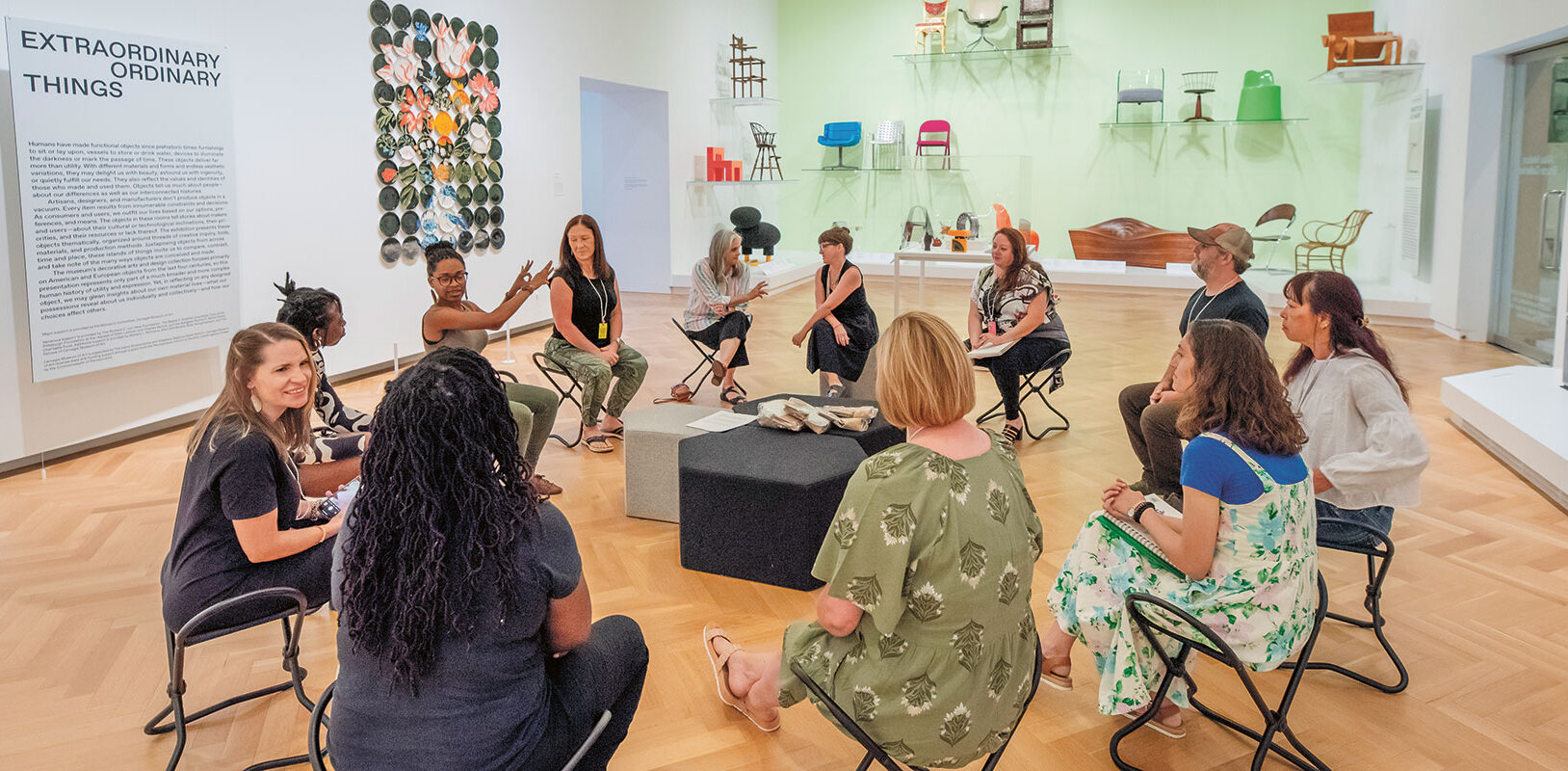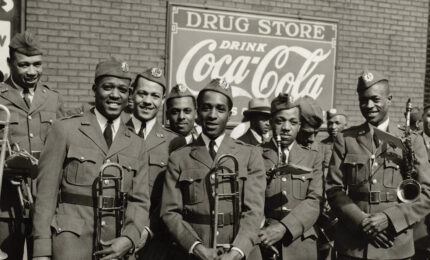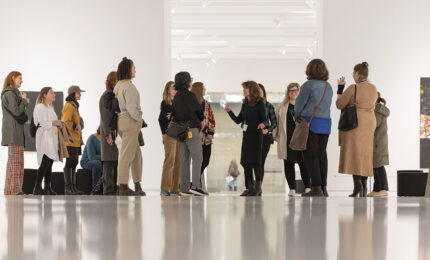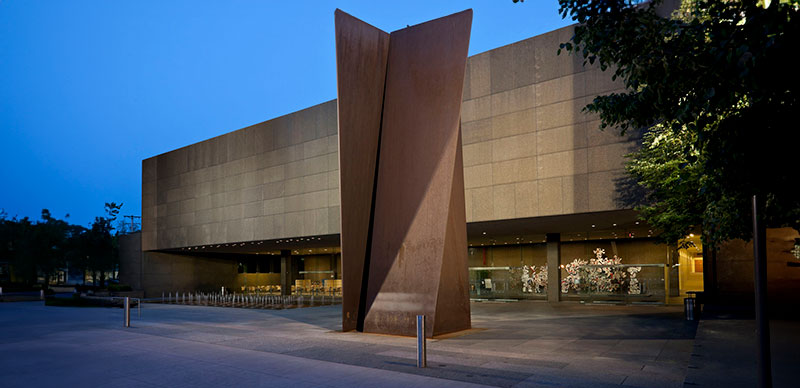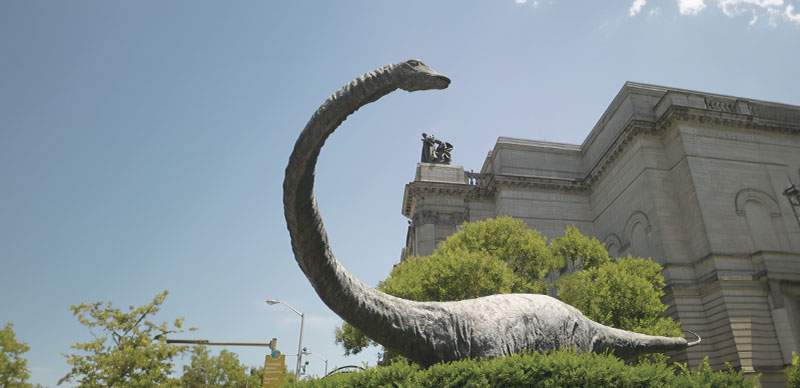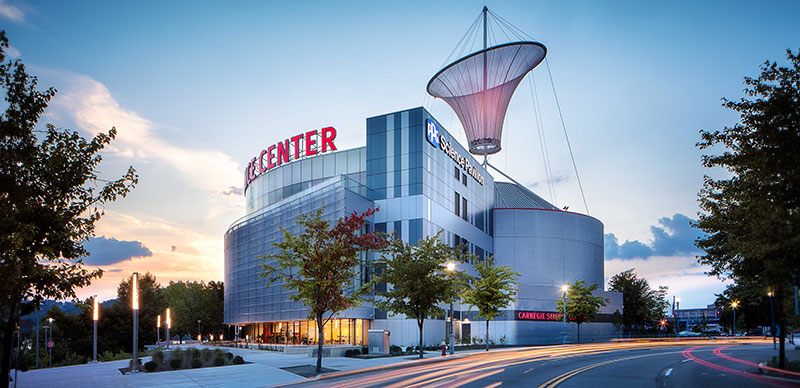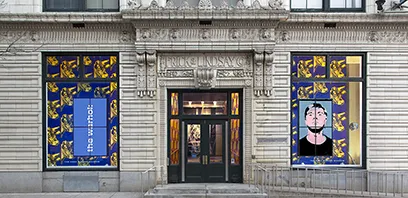On a Monday morning in June, a group of 10 teachers sat in a circle of foldable stools in Carnegie Museum of Art’s Ailsa Mellon Bruce Galleries, which feature objects from the museum’s expansive decorative arts and design collection. The banter between them, whose students range from kindergarten through high school, was reminiscent of pre-class catchup between kids reunited after a weekend apart.
A wall display of functional art—20 chairs that are part of the Extraordinary Ordinary Things exhibition—served as a backdrop and inspiration for the theme of that morning’s lesson, “Design Thinking.”
It was in this context that these teachers would develop new ideas for their classroom, and maybe find a bit of a battery recharge for themselves, as part of the museum’s summer Educator Residency. The three-week program, designed for educators across all disciplines, consists largely of Pittsburgh Public Schools teachers.
Divided into pairs, the educators were given a pouch of materials that included tissue paper, paper clips, rubber bands, pipe cleaners, and other supplies. Their assignment, typed on a piece of paper they’d plucked from a pile, asked them to build something new: a game, a “feminine hygiene product,” a “cordless hair-styling device.”
After a brief brainstorming session, the educators’ busy hands began to build simple innovations—from a set of “curlers” and friction-creating tongue depressors to a waist trainer for menstruating women, complete with built-in aluminum foil “heating pads.”
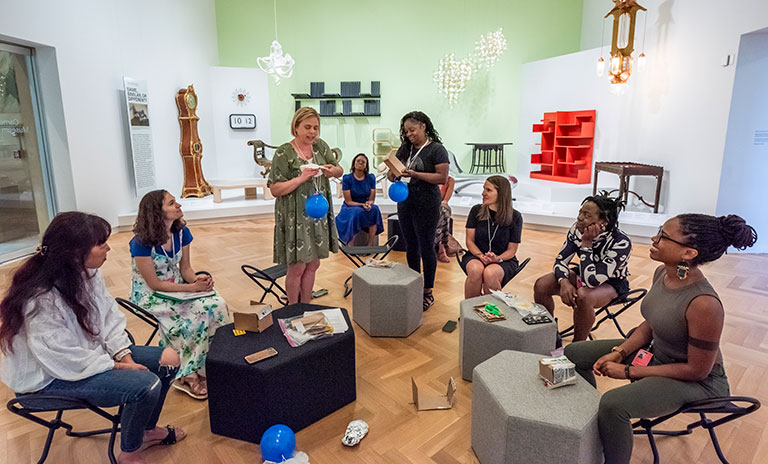
Maisha Johnson, senior manager of youth and family teaching and learning at Carnegie Museum of Art, sat on the perimeter of the action, watching the educators collaborate. She views this time of creative recuperation as a way of sustaining a community of learners. Though she’s been at the museum for less than two years, she’s been in education as a teacher and school administrator for more than two decades.
“[This role has] made me think about how many opportunities I had to play in the workspace,” she says. “Having fun, being happy—that’s important to well-being.”
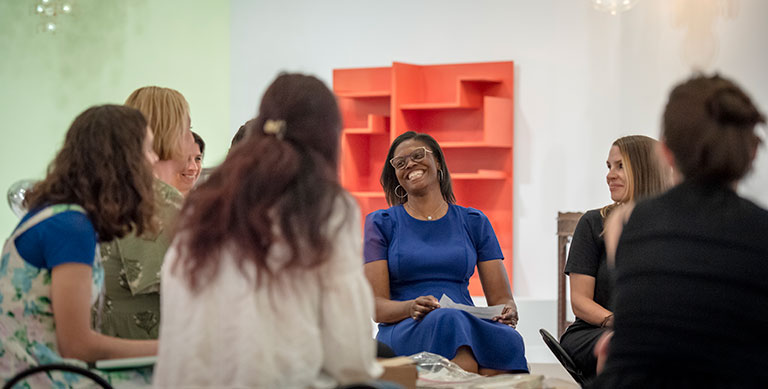
“We thought to ourselves—how can our museum not only support the professional development of our regional educators, but also support their overall well-being? This led to educators being connected to art, ideas, and one another.”
-Maisha Johnson, senior manager of youth and family teaching and learning at Carnegie Museum of Art
Yet “having fun” is just one aim of the summer Residency, which the museum launched in 2021 in response to educators feeling depleted from lingering impacts of the COVID-19 pandemic and cuts to public education funding. The Residency has three goals: Establish a community of learners, explore the museum as a learning resource, and experience creative recuperation.
“We thought to ourselves—how can our museum not only support the professional development of our regional educators, but also support their overall well-being?” explains Johnson. “This led to educators being connected to art, ideas, and one another.”
A ‘Battery Recharge’
The Residency immerses educators, who apply each spring, in a creative environment in which to develop their teaching practice in relationship to art. The museum offers an outside-the-classroom space that helps residents remember their “why” for teaching and reconnect to the practice.
Through experiential learning, each resident designs a lesson plan by the end of the third week that connects an artwork of their choosing to their curricular goals. These lesson plans, which include social emotional learning, creativity, observation, and critical thinking, are then made available to other educators, free of charge, on the museum’s website. Throughout the process, educators learn to be sensitive to contextuality, making sure that all students feel a part of the learning, too.
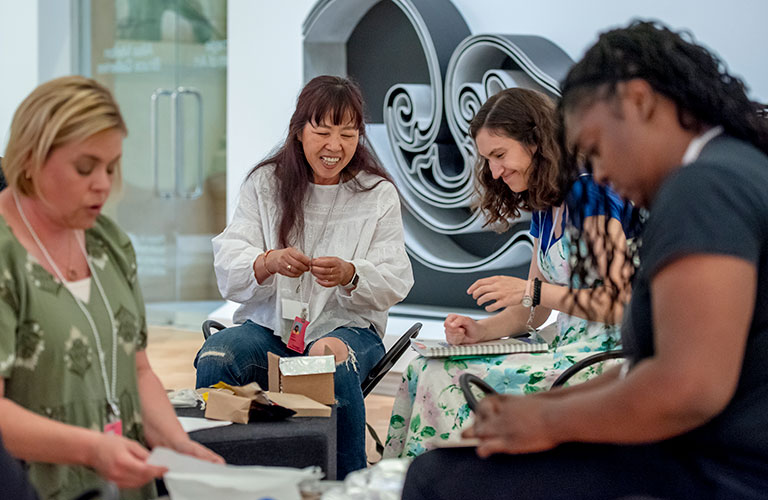
Jacqueline Clarke, who teaches African American history and psychology at Barack Obama Academy of International Studies, completed the program in the summer of 2023. She learned about it through Johnson, who had been her assistant principal prior to stepping into her current role. Clarke immediately was intrigued, relishing the chance to collaborate again with Johnson, invest in her own creativity, and think outside the box about how to incorporate the arts into her curriculum.
The experience showed Clarke how professional development can be authentic and stress-free with the ability to create, discover, and think about art in new and educational ways.
“The creative recharge definitely allowed me to be open to thinking uniquely about the impact of art in history,” she reflects, “and allowed me to appreciate the storytelling, activism, and design aspects of art that are also core elements of history.”
In creating her own invention out of a bag of supplies during her Residency last year, Clarke says she was reminded of how art can be innovative and transformative when thinking about solving problems for society.
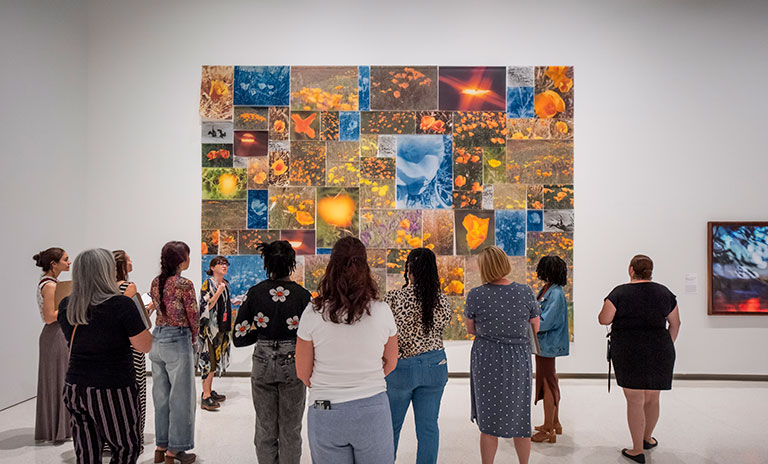
An example of weaving history and social activism into art played out during a show-and-tell session in June, when Johnson distributed to Residency educators a list of Black inventors who had inspired that morning’s invention prompts. Among the names: Mary Kenner, who invented the sanitary belt in 1957, and Marjorie S. Joyner, who created the permanent hair-wave machine in 1928. Kenner and Joyner may not be household names, but their inventions went on to have significant impacts on American society.
Johnson used this as a chance to highlight the power of amplifying voices that have been marginalized, something crucial to the education department and the Museum of Art as a whole.
“In turn, we lift up and facilitate experiences for the problem solvers in our classrooms,” she says.
Making New Connections
Past program participants say it reinvigorated their notions of how to connect material with their students’ experiences.
Andrea Sisk, a math teacher at Woodland Hills High School for 19 years, applied to the program in the spring of 2021. Many of her students are from underserved communities and get bombarded with messages about not being good in math and not needing these skills to be successful. Sisk has sought to boost their interest in math by connecting it with other subjects and highlighting its relevance to students’ everyday lives.
“In order for my students to find relevance in my content,” she explains, “it is essential for me to make connections with other disciplines. I am adept in making connections with science, English, sports, foreign languages, theater arts, geography, and technology, but had no real understanding of visual arts. I felt as though I owed it to my students to help them make every connection possible to engage them.”
Sisk most loved learning about pieces in the museum, and how these discoveries might lead to fresh lesson ideas that could pique her students’ interest. For example, after a visit to the Hillman Hall of Minerals and Gems in Carnegie Museum of Natural History, educators were tasked with using oil pastels to create a color wheel based on gems and minerals of their choosing.
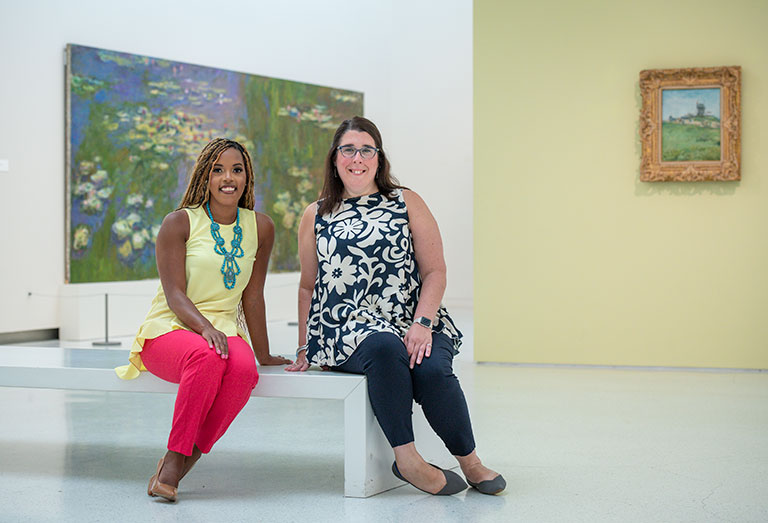 Photo: John Schisler
Photo: John SchislerClarke appreciated getting behind-the-scenes exposure to different layers of the art world, too, specifically in interacting with individuals who design and execute new exhibitions. “It allowed me to see a whole new level of careers and opportunities I could potentially expose my students to within the art field,” she says.
Sisk learned so much about infusing art into her classroom that now, when she teaches a math remediation class, she incorporates pieces of art at the museum. Students write equations of lines by superimposing a grid over a print of Untitled (Red Butterfly Over Green) by Mark Grotjahn or explore proportionality by examining Equivalent by Joan Witek and then measuring and computing which of their body parts (wingspan, height, length of middle finger, etc.) are proportional. They write about what “negative” means in terms of negative space in sculptures like Georgia Gate by Thaddeus G. Mosley.
At the culmination of Sisk’s unit, her students took a field trip to the museum to see the artworks they’d been studying in class. After a guided tour, they spent the day exploring both the Museum of Art and Museum of Natural History.
“I cannot tell you how much it means to my students to go on this field trip,” she says.
Lasting Impressions
Clarke says she left the program with strategies to help students engage with art and valuable resources for her classroom. She also has a relationship with Carnegie Museum of Art’s education program. She’s been able to take students to the museum as a partnership with Winchester Thurston School to explore Charles “Teenie” Harris through photography.
“I have also begun to design lesson plans I can implement into our coursework that allow students to question history through the artist’s work,” she says.
Sisk compares the ending of the Residency in the summer of 2021 to saying goodbye at sleepaway camp. “The museum staff created a truly unique experience of both professional growth and personal nurturing,” she says. “I learned so much about art and infusing it into my classroom, while making connections, both with Museum of Art employees and other educators.” She deems the Educator Residency as the single greatest professional development she’s ever experienced.
The support educators receive extends well beyond their three-week residency. All residents are invited to gather at the museum approximately eight Thursday evenings a year to connect, explore a piece in the gallery, and make art, Sisk explains. “We share how we use art in our classes, and trade resources,” she says. “I truly treasure my nights at the museum as a few hours of calm in the midst of chaotic weeks.”
Sisk stayed in touch with a university teacher she met during the Residency and speaks to their class each spring. Through the Residency, she also learned about the Empowered Educator series, which is offered by the museum’s education department and engages educators to examine race and experiences through art. She’s referred colleagues in Spanish, history, and performing arts departments to the field trips offered by the Museum of Art, too. “The connections I make and the professional and personal growth it has afforded me makes me a better teacher, and a better resource for my students,” she says.
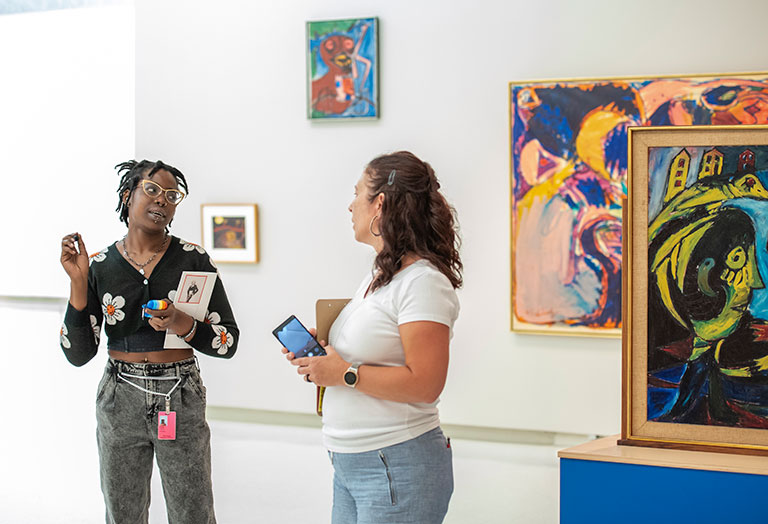
Clarke has attended artist meetups to connect with other residents, and she’s stayed in contact with Johnson to set up curated field trips. She deems the Residency “the most creative and refreshing professional development program I have been a part of thus far in my career.”
Current participants agree. At the culmination of one June 2024 lesson-planning session, Katie LaCava of New Kensington-Arnold School District made a point to praise Residency leaders. “This program is unique because of these individuals who are with us every day,” she says. “They’re very open, and they work really hard.”
On that June Monday, after viewing the educators’ creations, Johnson praised the teachers in her midst. “We appreciate your courage in not giving up,” she told them.
While sitting among the exhibition’s many decorative arts pieces—largely created as solutions to problems—she returned to the exercise’s theme of being an inventor and the importance of having a “what if” mentality, particularly in their own classrooms.
“How do we encourage that within our students?” she asks the group. “It’s in them already.”
The Educator Residency is generously supported by The Grable Foundation.
